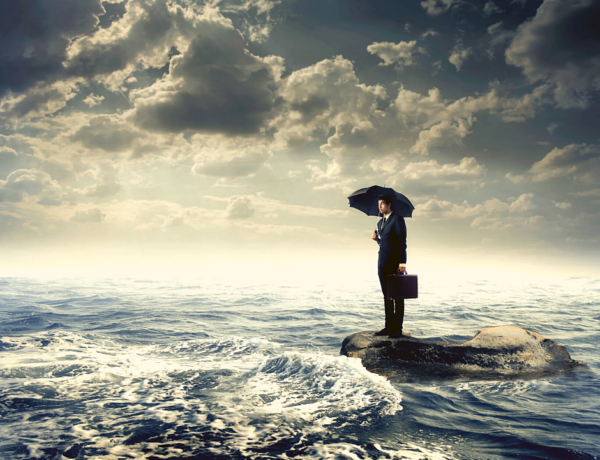By Isaac Sweet
There are a number of ways to hide the truth. One of the most effective around here is the “mask.” I learned about masks nearly a quarter-century ago. I had to. I had thirty-five years to serve, and was just beginning my new adventure as a prisoner.
Initially, the mask was all about survival. It was a means to an end. I was a teenager in the most notoriously violent prison in the state. The same prison that my dad and uncle had been to, but they were hard men. I was about as tough as a scoop of Ben and Jerry’s on a hot, sunny summer afternoon.
My first mask was just enough to hide my fear. As far as I was concerned the stakes were life and death. Fear, in that place was associated with weakness. And being stigmatized as weak meant inviting a level of hardship that would’ve been unsustainable for three and a half decades. The weak were bullied, exploited, extorted, beaten, and sometimes worse…
Those who have had the good fortune not to experience that kind of intense fear might question the legitimacy of mine, I assure you I had just cause to be afraid. There were legends surrounding a breezeway referred to as “blood alley,” and general population used it with regularity. One of my first memories there was when the guy on the phone next to me got his head split open. When I looked over at his lifeless form slumped against the wall, the phone still swinging side to side above him, I stared at him in a fear- induced paralysis. The guy on the other side of me reached over and turned my head away–another valuable lesson. Not long after that, I walked by a chalk outline of a body on my way to chow. The four cones connected by caution tape used to establish a perimeter around the chalk outline were kept along the outside of the chow hall wall between deployments. The sounds that echoed through that cell block were crazy scary too. Imagine the last thing you hear before drifting off to sleep is a fight, then lots of begging to “stop,” and “take it easy,” and then “use more Vaseline,” all followed by muffled sobs. That was a routine every third or fourth night, at least in one cell.
I was incredibly naive. If I hadn’t been oblivious to most of the dangers all around me that mask wouldn’t have been enough of a disguise. As it was, some of the people closest to me were able to see through it, but instead of exploiting my fears they helped me conceal them. They coached me to improve my mask, and make it more believable. At some point, I began to believe it too. Over time and with exposure, I became numbed to the horrors that inspired my fears. And as I acclimated to my surroundings and grew accustomed to all their negativity, that mask faded into obscurity.
A new mask emerged. If I was going to survive in this world of violence and chaos I needed to find a way to fit in. I needed camouflage. Everyone around me seemed angry at someone. Hate was everywhere. People were despised because of their race, religion, demeanor, uniform, affiliations, and most universally, their crimes. So, I took a stab at being mad too, but for me it was a difficult sell. Anger wasn’t good camouflage anyway. Eventually, someone would call my bluff, and it would backfire.
Fitting in proved difficult for me. It seemed each of my friends suffered from some sort of issue. Either they had a drug and/or alcohol addiction, anger problems, a hustler’s mentality, or some other form of criminal or radical impulsivity. My nature was more quiet, reserved, and meek. If I was really comfortable I would come out of my shell a little and be a clown. Which became another mask.
I fell in with some jokesters. Clowning around came pretty naturally, and developing a penchant for self deprecating humor eased my lack of comfortability. Plus, that kind of humor was the only kind where I was certain no one would get offended. It was easy to laugh at myself, and in that way I would carve out my little niche, find my place among those in our state’s garbage can.
There were other masks and other reasons to wear them too. To blend in I became a chameleon. I always wanted to be seen as “cool,” so I’d wear a mask in the pursuit of that. And I didn’t want to be perceived as a weenie so, there was my tough guy mask too. If I was hanging out with drug addicts I would feign interest in their stories and lifestyles. I would put on that mask. If I was hanging out with the weight lifters or the country music listeners I’d do the same thing. Although, I’ll admit passing for a country bumpkin didn’t take much convincing.
Masks are everywhere and serve many purposes. There is likely some debate as to whether they are good or bad. The impetus behind my initial mask was survival, the next was self-preservation, but the rest were an attempt to fit in. One of my young friends wore the mask of allegiance to a gang–a philosophy he had outgrown–but became trapped in his mask. It was a soul-sucking experience for him. I think the answer as to whether masks are good or bad is determined by our motivations. Why wear a mask? Why attempt to deceive?
We wear masks to compensate for a lack of authenticity. The question raised by wearing one involves our values and identity. Our values reflect our commitment, our commitment demonstrates our character, which is defined by our identity. This exercise compels us to reevaluate our values, provides the opportunity to rethink patterns of behavior and improve our sense of self. Also, it gives us a chance to challenge our conditioning. Do we need to wear a mask?
If you asked me if I’m wearing a mask today I’d say “no.” More than a decade ago, I made a commitment to myself to live the remainder of my life with honor and integrity. I define that as simply doing the right thing to the best of my ability in every situation regardless of who or if anyone is watching. Yes, I fall short sometimes, but I remain steadfastly focused on that goal. This is the authentic me.






No Comments